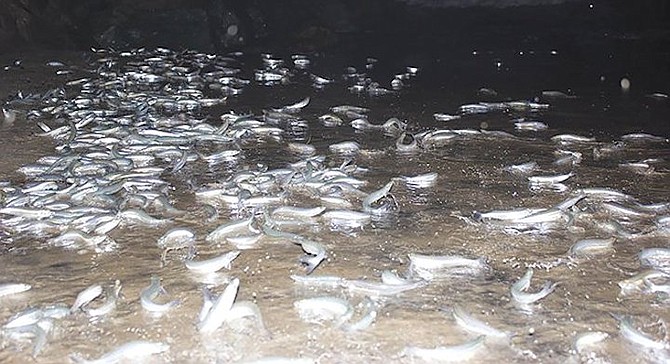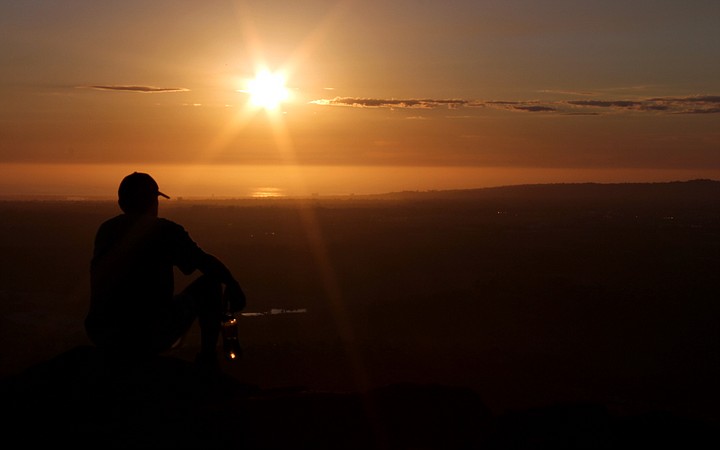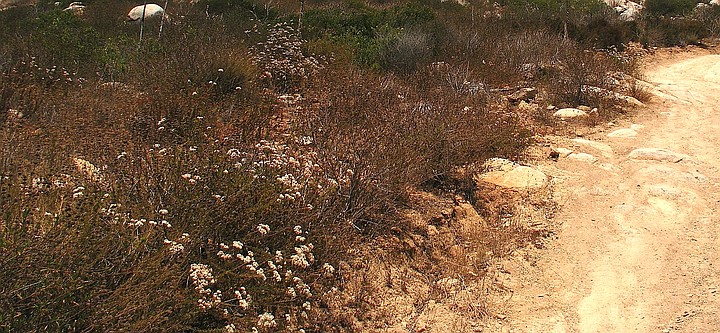 Facebook
Facebook
 X
X
 Instagram
Instagram
 TikTok
TikTok
 Youtube
Youtube

Grunion Runs are predicted to occur during the late evening hours (generally after 10 pm and before 1 am), following the nocturnal high tide, June 23 through June 30. The small, silvery grunion tend to spawn on wide, gently sloping beaches such as Silver Strand, Mission Beach, Pacific Beach, La Jolla Shores, and Del Mar. Open season for grunion starts in June, and from then until the end of summer, the fish can be collected in reasonable numbers using the hands only (fishing licence needed for persons 16 years of age and older). For more information, visit wildlife.ca.gov/Fishing/Ocean/Grunion.

Latest Sunset of the year, 8 pm Pacific Daylight Time in San Diego, occurs this Monday, June 27 — approximately one week after the summer solstice (our longest day). From now until late July, there will be little change in the time of sunset, even though the total length of daylight will steadily shorten.
Magnolia, the southern-U.S. native commonly planted as a decorative street tree in many of San Diego’s older neighborhoods, continues to bloom this month. Called the “queen of the flowering broadleaf evergreens,” its branches carry leathery, dark green leaves and large, white blossoms of pleasing fragrance.

Buckwheat, a late-bloomer among native plants in our area, is showing off its small, inconspicuous clusters of cream-colored flowers this month. Several kinds of buckwheat, found in dry, sunny locations throughout San Diego County, are the source of the “wild buckwheat” honey sold locally. Near the coast, look for flat-top buckwheat, common on south-facing slopes. Here, it shares space with other low-growing shrubs of the sage-scrub plant community like black sage and California sagebrush.
There will be a Rare Planetary Alignment the mornings of June 23 and 24. All five naked-eye planets(Mercury, Venus, Mars, Jupiter and Saturn) will appear in the eastern/southeastern sky in near-perfect alignment. The last time this happened was December, 2004. Set your alarm for 45 minutes before sunrise and bring binoculars for a better view.
The above comes from the Outdoors listings in the Reader compiled by Jerry Schad, author of Afoot & Afield in San Diego County. Schad died in 2011. Planet information from SkyandTelescope.org.


Grunion Runs are predicted to occur during the late evening hours (generally after 10 pm and before 1 am), following the nocturnal high tide, June 23 through June 30. The small, silvery grunion tend to spawn on wide, gently sloping beaches such as Silver Strand, Mission Beach, Pacific Beach, La Jolla Shores, and Del Mar. Open season for grunion starts in June, and from then until the end of summer, the fish can be collected in reasonable numbers using the hands only (fishing licence needed for persons 16 years of age and older). For more information, visit wildlife.ca.gov/Fishing/Ocean/Grunion.

Latest Sunset of the year, 8 pm Pacific Daylight Time in San Diego, occurs this Monday, June 27 — approximately one week after the summer solstice (our longest day). From now until late July, there will be little change in the time of sunset, even though the total length of daylight will steadily shorten.
Magnolia, the southern-U.S. native commonly planted as a decorative street tree in many of San Diego’s older neighborhoods, continues to bloom this month. Called the “queen of the flowering broadleaf evergreens,” its branches carry leathery, dark green leaves and large, white blossoms of pleasing fragrance.

Buckwheat, a late-bloomer among native plants in our area, is showing off its small, inconspicuous clusters of cream-colored flowers this month. Several kinds of buckwheat, found in dry, sunny locations throughout San Diego County, are the source of the “wild buckwheat” honey sold locally. Near the coast, look for flat-top buckwheat, common on south-facing slopes. Here, it shares space with other low-growing shrubs of the sage-scrub plant community like black sage and California sagebrush.
There will be a Rare Planetary Alignment the mornings of June 23 and 24. All five naked-eye planets(Mercury, Venus, Mars, Jupiter and Saturn) will appear in the eastern/southeastern sky in near-perfect alignment. The last time this happened was December, 2004. Set your alarm for 45 minutes before sunrise and bring binoculars for a better view.
The above comes from the Outdoors listings in the Reader compiled by Jerry Schad, author of Afoot & Afield in San Diego County. Schad died in 2011. Planet information from SkyandTelescope.org.
Comments